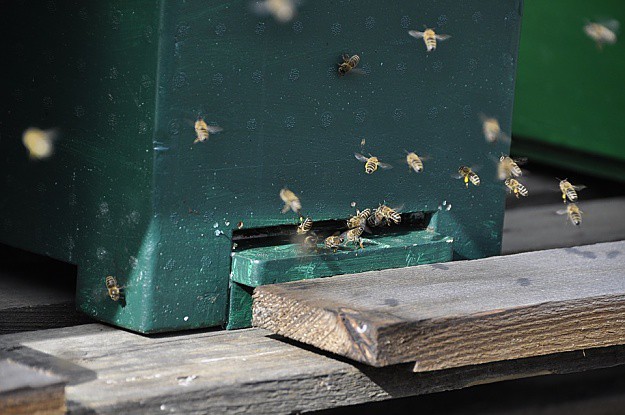Bees are disappearing, but creating a bee-friendly garden might help bring them back. If you want to attract bees, create a bee-friendly garden with tips from this infographic!
Help Save Bees, Create A Bee-Friendly Garden
It's big news of late that the number of bees is alarmingly declining. While for most people, the absence of bees only means no honey for their tea, gardeners know it's worse than that. No pollinators mean no fruits and vegetables for us. Since we are more aware of the consequences, we might as well help create a more inviting environment for them. Creating a bee-friendly garden and environment is simple and easy. Find out more about a bee-friendly garden as you read through.

Creating a Bee-Friendly Garden

Losing our pollinators could very well mean losing our fruits and vegetables. About a third of crops are pollinated by bees and the world without bees is definitely unimaginable. Here are some of them:
- Apples

- Cucumber
- Turnip
- Avocado

- Nuts
- Pears
- Melons
- Peaches

- Passion Fruit
- Cherries
Insect Pollination Versus Other Types of Pollination
Fruits can vary greatly in size and quality if insect pollination is taken out of the equation. They will be smaller in size and may even look deformed. Without bees as pollinators, it's a possibility that we can no longer grow fruits and vegetables inexpensively and organically.
DIY Bee Homes For Your Garden
You can create homes for bees in your garden using an old piece of lumber, bamboo, or other hollow sticks.
Bee Board

- Take an old piece of untreated lumber and drill half an inch wide of holes into the board.
- Place it in a suitable area where it's sheltered from the rain or you can add a tiny roof to it.
- Keep your bee house dry and protect them from woodpeckers.
Bamboo Home

Bees prefer hollow tubes to nest in, so small bamboos are perfect for creating a bee home.
- Get bamboos from the local garden store and cut them six-inch in length pieces.
- Place the bamboo inside a tin can to create your bamboo bee home.
- Place the bee’s nest 3 to 6 ft. off the ground in a warm, sunny spot that's protected from the rain.
Making A Bee Sugar Shack

Bees may come out from their winter hibernation when there aren't many flowers yet in your garden. You can help feed them during this time using this DIY bee feeder.
- Drill 4 1/8-inch holes in standard mason jar lid.
- Fill your feeder with a 1:1 ratio mixture of sugar and water.
- Rest inverted mason jar feeder on two pieces of wood near bee homes.
Building a bee hive is fun!
Build your own #bee #hive for great tasting #honey http://t.co/qEgW5AIS6n pic.twitter.com/p9wgdPDrnv
— Homesteading (@HomesteadingUSA) May 27, 2015
Source Of Pollen

Keep your garden well stocked with flowers for the pollen to keep the bees right at home. Flowers with blue to purple colors are especially inviting to bees. Growing lavender and salvias could be just what your garden need.
Create A Bee Watering Station

An accessible water source will help create a bee-friendly environment. Bees needed to be hydrated as well. Conventional backyard water providers like a bird bath often don't have the necessary “landing pads” that make them accessible to thirsty bees. Follow these ideas to create an ideal water station for bees:
- Place your water station near your flower garden.
- Use a shallow bowl or dip tray and fill it with just enough water to evaporate overnight.
- Place stones in the tray to serve as the bees landing pad.
- Replace the tray with clean water every day.
Do you think you have everything you need to make your garden as bee-friendly as possible? Let us know in the comments below!
You may also like, Beehive Plans For Beekeeping In A Homestead!
![]()
Follow us on Facebook, Instagram, Pinterest, and Twitter!
This post was originally published in April 2016 and has been updated for quality and relevancy.

how do you keep the rocks clean in the watering trough? I have to change the water twice a week and I am NOT going to scrub every rock. thoughts?